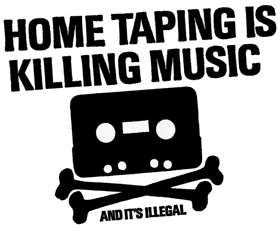Is this another post about how MOOCs are misunderstood ideas that the critics all get wrong? Not quite. There are problems with MOOCs, but I’m still looking at the conversation about MOOCs in general (continuing from my last post kind of). The general conversation about MOOCs (and for that matter other ed tech innovations such as flipped learning, gamification, etc) tends to be all over the place: insightful, missing the forest for the trees, really odd, kind of just there, etc. All of that is great and makes for interesting discussion. One of the concepts that seems to be getting more traction the past few weeks is “motivation.”
The article about “Why Technology Will Never Fix Education” has already been the subject of many insightful observations. I want to zoom in on one part:
The real obstacle in education remains student motivation. Especially in an age of informational abundance, getting access to knowledge isn’t the bottleneck, mustering the will to master it is. And there, for good or ill, the main carrot of a college education is the certified degree and transcript, and the main stick is social pressure.
I don’t think we can just pass over that last statement with just a simple “for good or ill.” There is a lot of “ill” with that carrot that needs to be unpacked. In an article that very correctly examines the problems of inequality in education, a huge systemic problem is skipped over.
Of course, this article is not the only one. Many other articles have pointed at “student motivation” as being a huge problems with MOOCs. MOOCs are like any other education idea: subject to good and bad instructional design. So you shouldn’t blame the overall idea when learners are just getting bored with bad instructional design. But even beyond that, the above quote speaks to how our system in the U.S. relies on motivational techniques that are predominantly extrinsic in nature. We spend decades indoctrinating learners with this context, and then when an idea comes along that relies mostly on intrinsic motivation, we blame the idea itself rather than our system.
What if MOOCs are just a mirror that shows us the sociocultural problems we don’t want to deal with in our system?
What if the problem is not with the learners, but the way they have been programmed through the years? Grades, credits, failure, tuition, fees, gold stars, extra recess for good grades, monetary rewards, etc are all programmed into learners from a young age.
You can say MOOCs are failing because they lack sufficient “student motivation,” but what if it was actually the case that society has been failing for decades and MOOCs are just exposing this?
Of course, we all recognize many ways that society is failing in education. But what if there are other ways? What if relying on too much extrinsic motivation is a failure? What if we are failing to embrace all of the current and historical research in motivation? What if we know a lot about motivation, but fail to real utilize any of that knowledge? On Twitter yesterday, Rolin Moe pointed out that he never reads discussion of Herman Witkin, cognitive styles, field dependence/independence, etc in relation to motivation. In my circles, I have heard Witkin brought up, but to be honest – I can’t recall anyone trying or applying his ideas (kind of in the same way people in education rattle off Skinner or Bandura and then just don’t really use any of their ideas). These are all ways that our educational system was failing just in the area of motivation for decades before MOOCs (or many other Ed Tech ideas) even came along.
Yet what happens is that the ideas like MOOC are blamed for the historical failure of the system, and those that feel more comfortable within that system recommend pulling the wild ideas back in to make them look more like the existing system. Just think about it: what are the recommendations for fixing “student motivation” in MOOCs? Find a way to add back extrinsic motivation!
I would say: no. We need to find a different path. In fictional entertainment, one of the foundational constructs is to reach for is “suspension of disbelief.” You have to help the readers come to a place of either gaining interest in your story or believability in the fiction elements so that they suspend skepticism and engage the story. Traditional education has typically sought for a “suspension of laziness” – looking for ways to get learners to get off their rears and learn (because we always assume that when they don’t want to learn it is their motivation instead of our design). Newer ideas like MOOCs are going past that, to what I guess could be called “suspension of extrinsic motivation” (for lack of better words). What does learning design look like when you remove all of these carrot sticks (or actual paddling sticks) and leave learners to just pure learning? Well… maybe purer learning than what we had.
![]() There are many, many more angles to explore here (not to mention problems with extrinsic/intrinsic motivation constructs), but I am already getting long-winded. The important idea to consider is that instead of pulling emerging technology and design back towards the tradition of what we already know (which is actually a power struggle by those in power), we need to push forward towards the direction that we already know we need to go.
There are many, many more angles to explore here (not to mention problems with extrinsic/intrinsic motivation constructs), but I am already getting long-winded. The important idea to consider is that instead of pulling emerging technology and design back towards the tradition of what we already know (which is actually a power struggle by those in power), we need to push forward towards the direction that we already know we need to go.
(image credit: Manu Mohan, obtained from freeimages.com)
Matt is currently an Instructional Designer II at Orbis Education and a Part-Time Instructor at the University of Texas Rio Grande Valley. Previously he worked as a Learning Innovation Researcher with the UT Arlington LINK Research Lab. His work focuses on learning theory, Heutagogy, and learner agency. Matt holds a Ph.D. in Learning Technologies from the University of North Texas, a Master of Education in Educational Technology from UT Brownsville, and a Bachelors of Science in Education from Baylor University. His research interests include instructional design, learning pathways, sociocultural theory, heutagogy, virtual reality, and open networked learning. He has a background in instructional design and teaching at both the secondary and university levels and has been an active blogger and conference presenter. He also enjoys networking and collaborative efforts involving faculty, students, administration, and anyone involved in the education process.


